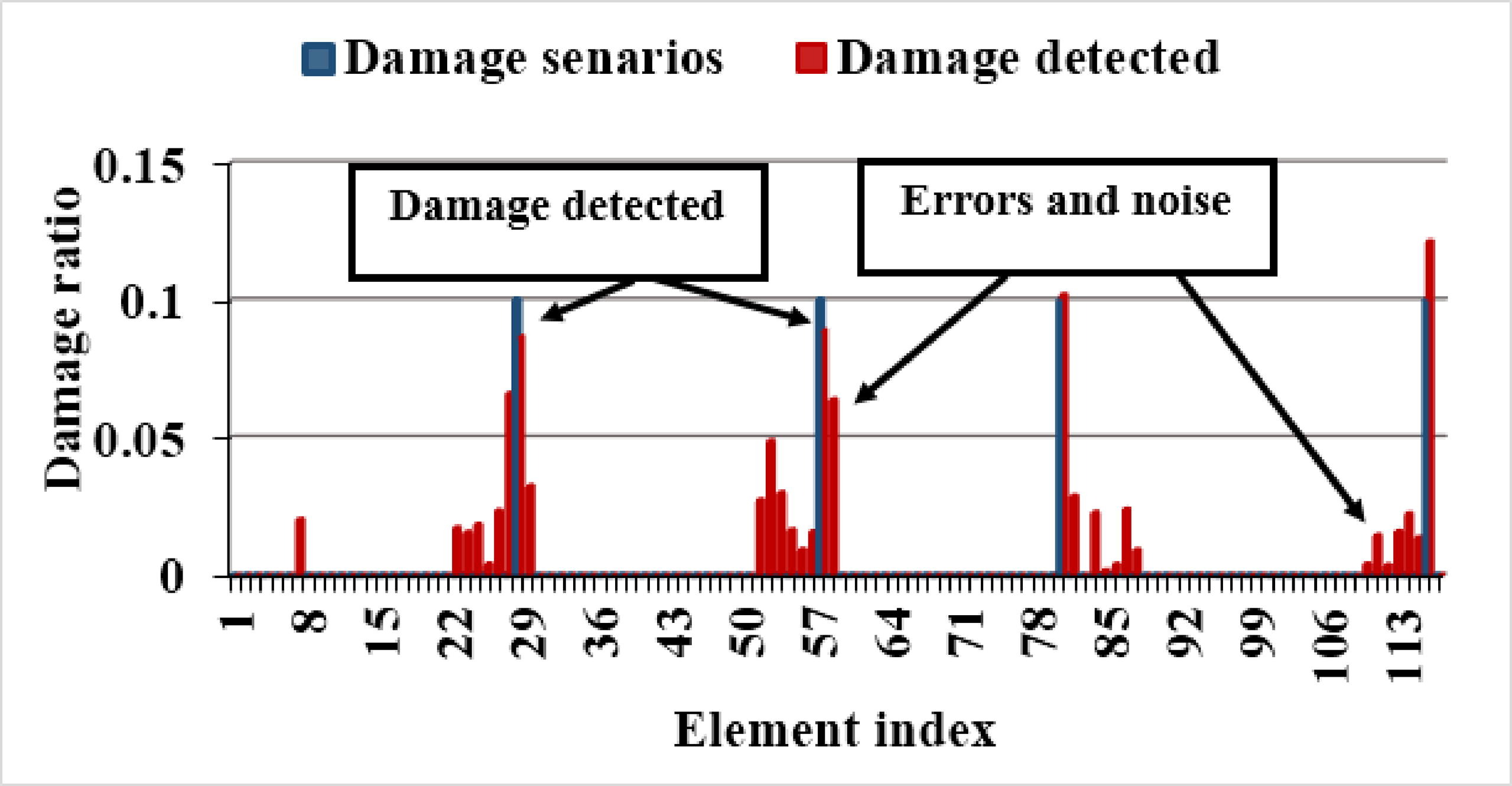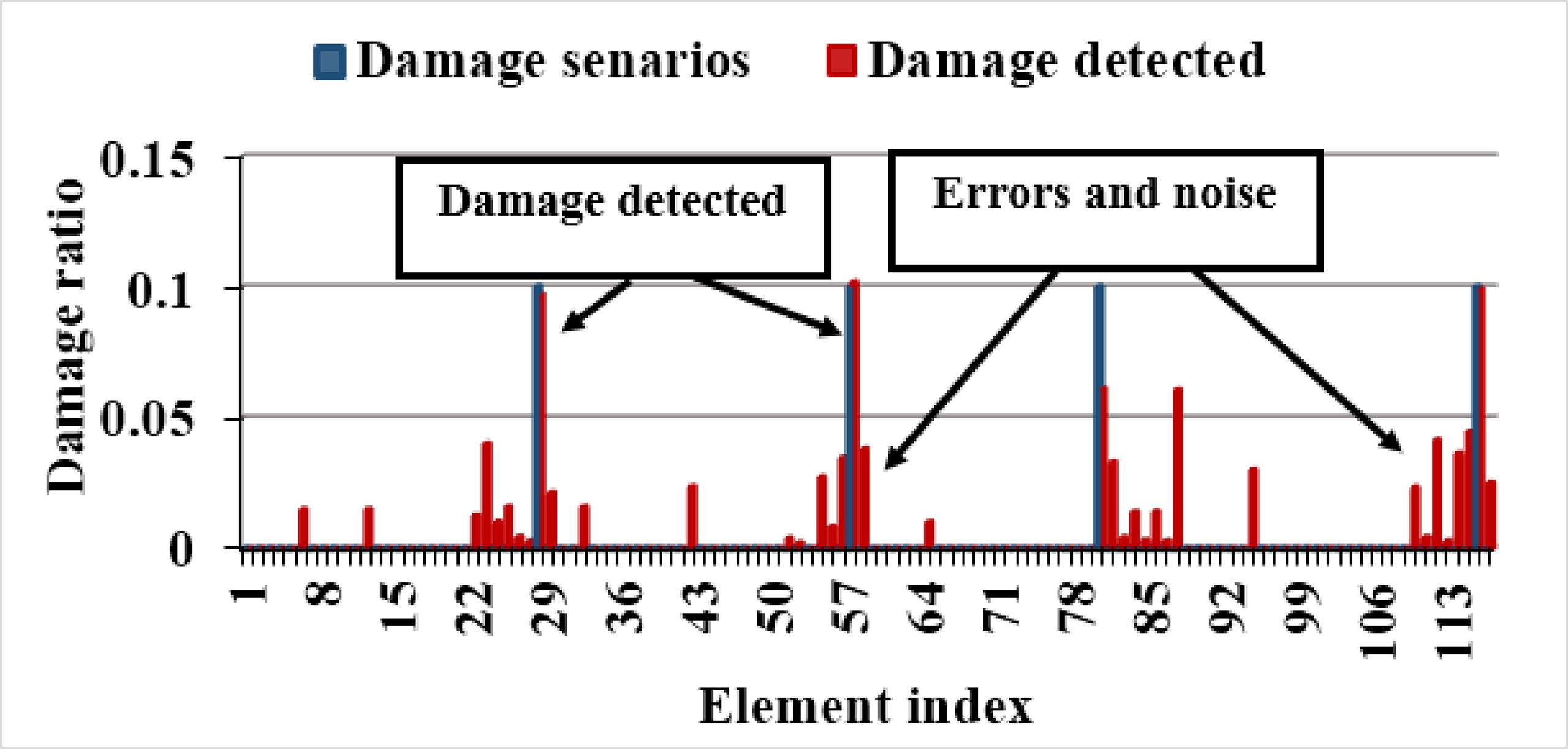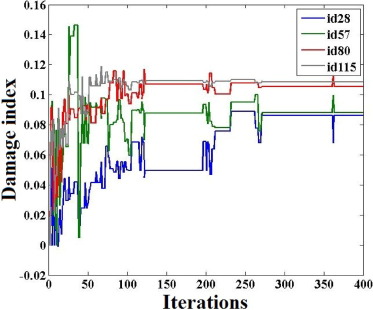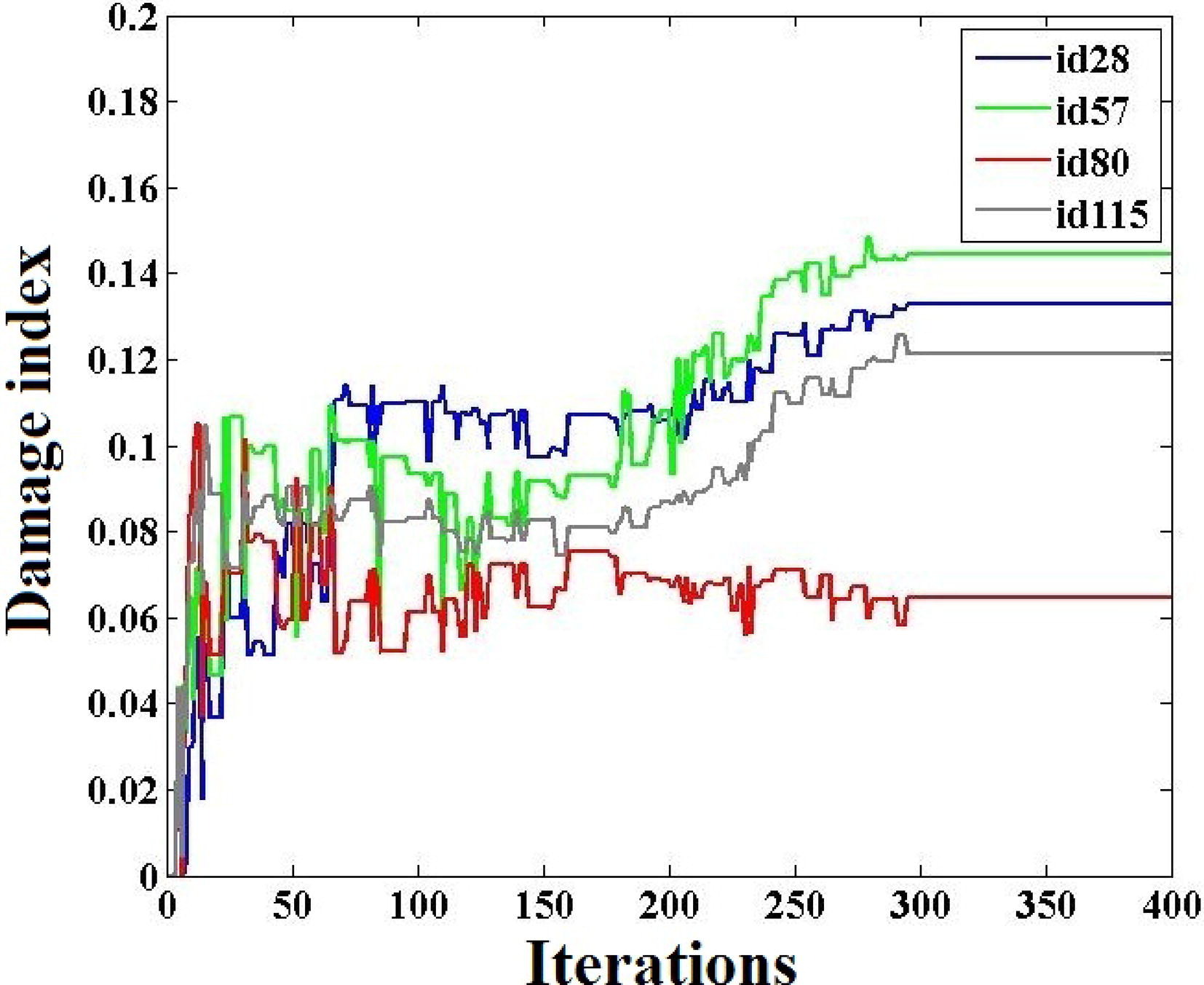A new self-adaptive quasi-oppositional stochastic fractal search for the inverse problem of structural damage assessment
Line-type damage is abundant in engineering structures that have been in service for a long time. Vibration-based nondestructive testing as a global method has been extensively used in structural damage identification. In this study, a two-dimensional directional continuous wavelet transform (2D-DCWT)-based damage identification algorithm using “Morlet2d” wavelet for line-type damage detection in plate structures is presented. An analytical long narrow notch-type damage model of simply-supported plates is proposed to evaluate line-type damage effect on plate vibration performance. Based on the proposed model, the biggest challenge in parameter selection of wavelet analysis is solved. The fundamental aspects of 2D-DCWT algorithm in term of notch location and orientation are assessed. A multi-mode shape fusion approach is presented to make the 2D-DCWT algorithm apply to the high-order mode shapes. A comparative study with isotropic “Mexcan-hat2d” wavelet-based damage identification is performed, and it demonstrates that the proposed 2D-DCWT algorithm is superior in noise immunity. The efficiency and practicability of the 2D-DCWT algorithm are certified by an experimental modal test on damage detection of an artificially-induced notched aluminum alloy clamped plate using excitation-response system of the Piezoelectric Leadzirconate-Titanate (PZT) and Scanning laser Doppler Vibrometers (SLDV). As demonstrated in both the analytical and experimental investigation, the suggested approach may successfully identify line-type damage in plate-type structures.Fig. 14. Damage locations (damage scenario5 under 5% noise).

Fig.1. Damage locations (damage scenario5 under 5% noise).

Fig. 2. Damage locations (damage scenario5 under 8% noise).

Fig.3. The convergence of the damage indices based on the SA-QSFS corresponding to scenario 5 under 5% noise.

Fig.4. The convergence of the damage indices based on the SA-QSFS corresponding to scenario 5 under 8% noise.
DOI: 10.1016/j.aej.2021.06.094